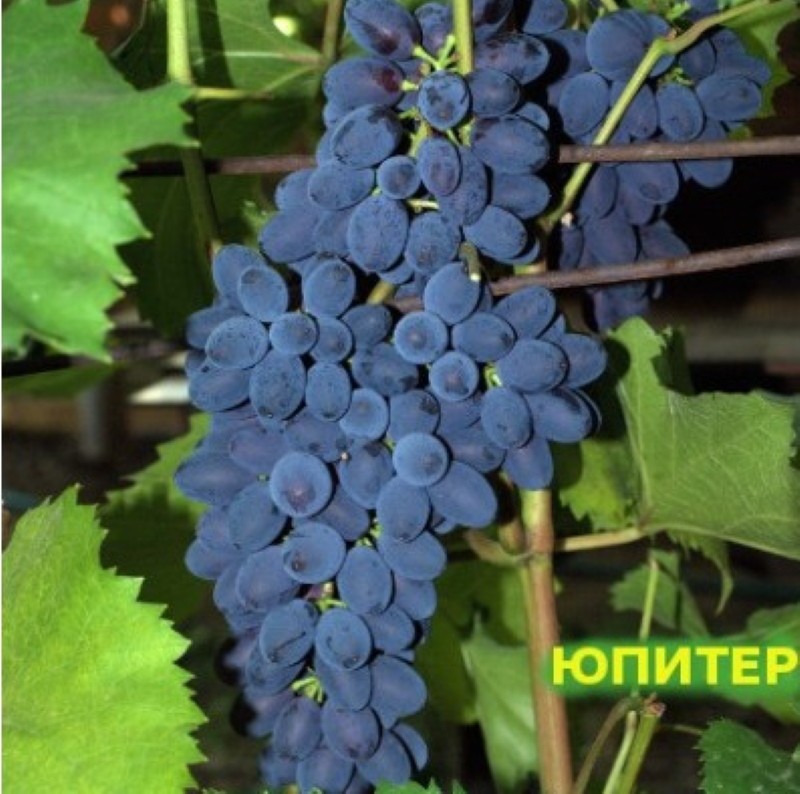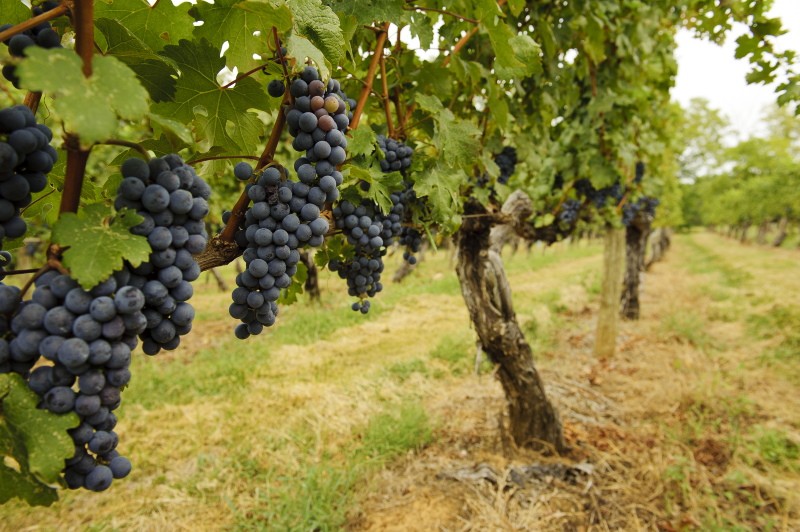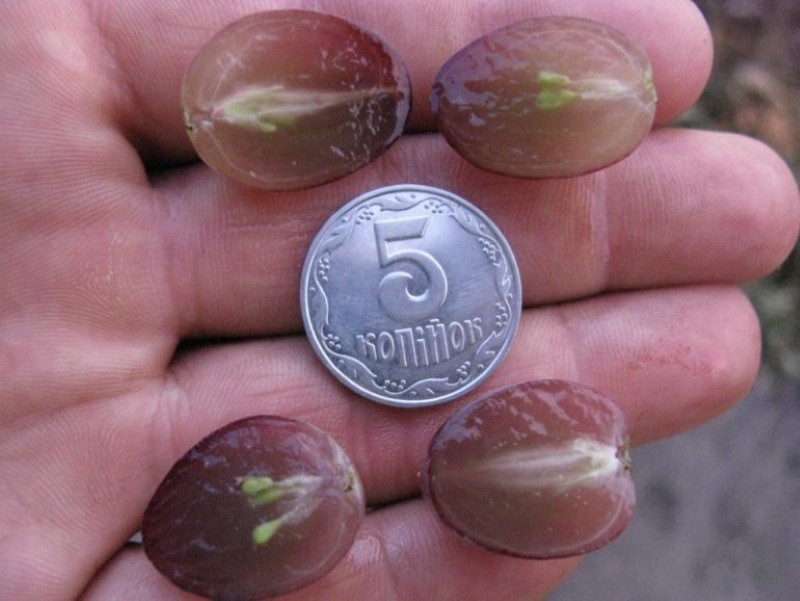Seedless early grapes Jupiter - description of the variety, photos, reviews
 It is not yet in the State Register of Russia, but more and more often it can be found in private vineyards due to its ease of cultivation and high frost resistance. This is one of the new American hybrids - the Jupiter grape, a description of the variety, a photo, reviews of which are becoming more famous every year. Already today grapes are successfully grown not only in the Krasnodar warm climate, but even in the Urals. And although its clusters are small, they are very sweet, besides, they are also pitted.
It is not yet in the State Register of Russia, but more and more often it can be found in private vineyards due to its ease of cultivation and high frost resistance. This is one of the new American hybrids - the Jupiter grape, a description of the variety, a photo, reviews of which are becoming more famous every year. Already today grapes are successfully grown not only in the Krasnodar warm climate, but even in the Urals. And although its clusters are small, they are very sweet, besides, they are also pitted.
Jupiter grapes - description of the variety, photos, reviews

Jupiter represents table dessert early grapes. In warm regions, the harvest is harvested from mid-July, in cooler climates - in the first decade of August.
According to wine growers growing Jupiter in the Krasnodar Territory, this is one of the best non-sheltering varieties. In addition, the grapes are highly ecological. Due to their immunity to major diseases, vineyards almost do not need chemical treatment.
Jupiter grape bushes are distinguished by the vertical arrangement of shoots, which makes it easier to care for them. They have medium vigor and good maturity of the vine, the bark on which turns red with age. The leaves are large, with 3-5 lobes, rich green color.
The variety can withstand minus 28 ° С. This allows it to be grown without shelter in many regions. In addition, he almost does not suffer from oidium, mildew, anthracnose and gray mold and is resistant to pests.
Fruiting and taste
 The early Jupiter grapes are fast-growing. The seedling gives a signal harvest in the second year, and begins to full-fledged fruiting from the fourth year. One adult bush will yield up to 30 kg of grapes.
The early Jupiter grapes are fast-growing. The seedling gives a signal harvest in the second year, and begins to full-fledged fruiting from the fourth year. One adult bush will yield up to 30 kg of grapes.
The bunches are medium in size, which, according to reviews, is not very popular with winegrowers. The maximum weight does not exceed 700 g, but on average each bunch weighs 400-500 g. Their shape is conical, the berries are moderately dense. But the grapes themselves will delight you with their large size and weight up to 5 g. Basically, they are elongated, but there are also round shapes. The berries are covered with a thin but dense skin, the color of which depends on the stage of ripening. At the same time, they ripen unevenly, and one bunch can contain both pinkish and blue berries. When fully matured, Jupiter is almost black in color. The flesh itself is greenish, very juicy and fleshy, crunches and smells like nutmeg. And it has almost no seeds, for which the variety is referred to as kishmish species.
The tasting grade is 9 out of 10 points, which indicates its high value.
Pros and cons of the variety
 Of the benefits of the Jupiter grape, first of all, it is worth noting:
Of the benefits of the Jupiter grape, first of all, it is worth noting:
- early maturity and early maturity;
- large, sweet and aromatic berries without seeds;
- lack of peeling, cracking and damage to berries by wasps;
- resistance to frost, diseases and pests;
- the possibility of transporting and storing the crop for another couple of months after harvest.
The hybrid has almost no drawbacks, except for low drought resistance on light soils. And yet - if you overexpose the harvest, then the berries begin to crumble. Also, not everyone likes its small clusters.